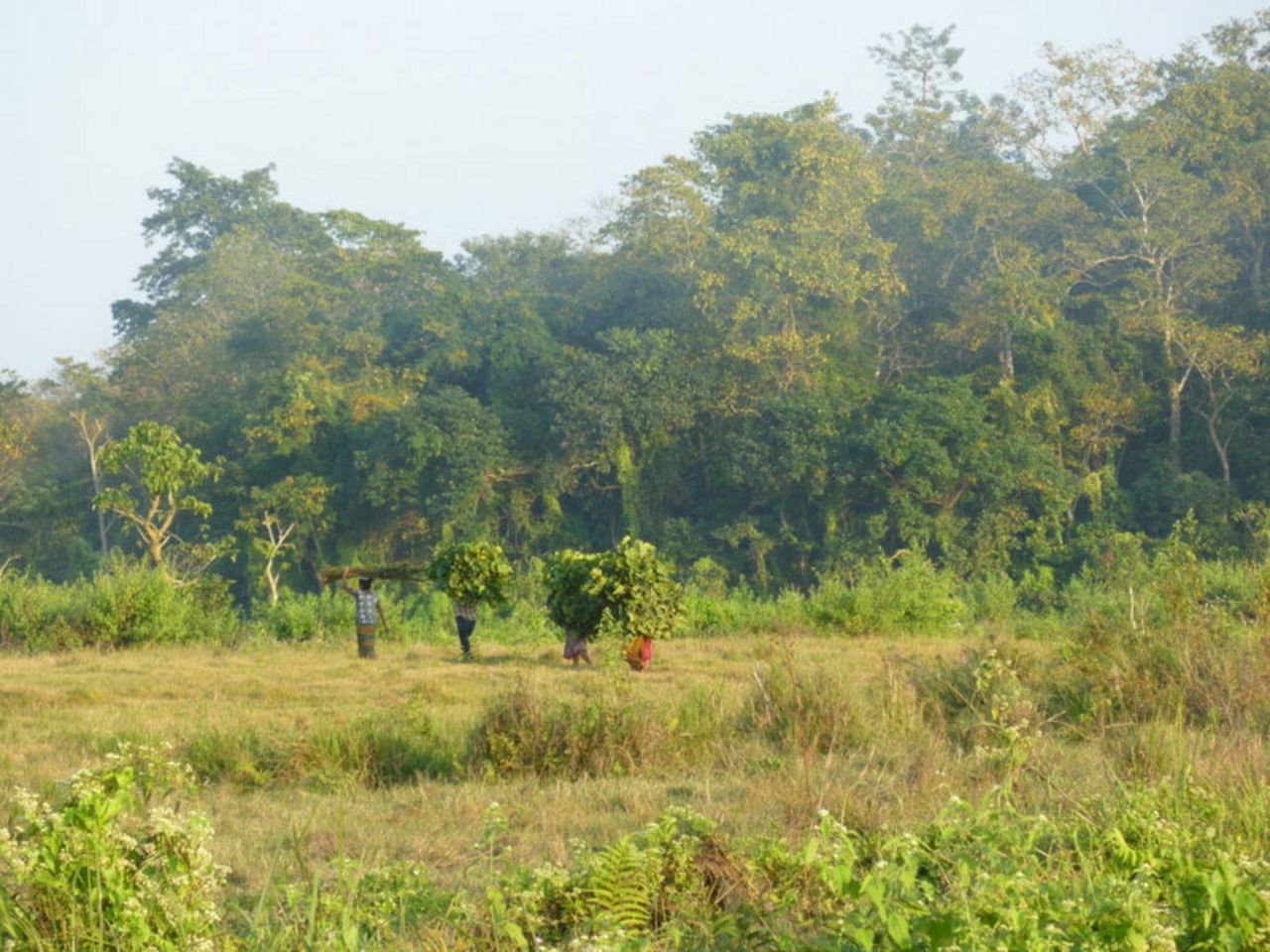Project
Forest dependency and livelihoods

Forest utilisation and rural livelihoods in Nepal
People conducting subsistence oriented livelihood strategies are usually dependent on forest resources. Why do they use the forest resource more or less intensive? How can they overcome this forest dependency?
Background and Objective
Dependency on forest resources in rural areas is often argued to be the main driver for small-scale deforestation and forest degradation. Here, the availability and interrelations between natural, human, physical, financial and social resources influence the utilisation behaviour.
The objective of the study is to determine the influences on forest resource utilisation behaviour by those people who are on the one hand affected by forest loss and degradation, and on the other hand impact the resource themselves.
From the influencing factors on forest utilisation intensities of rural households, information should be deduced for policy advice on instruments for fight of deforestation, degradation and poverty.
Target Group
Science and policy in the area of development aid and forest protection
Approach
First, we categorised internal and external data from the household survey in accordance with the five livelihood capitals (natural, human, physical, financial and social resources in accordance with the `sustainable livelihoods framework'), and described causal relationships to forest utilisation. We empirically tested these potential influences on the intensity of forest utilisation, and identified empirically significant influences on the utilisation intensity of forest products, of firewood and tree fodder.
Data and Methods
The study is based on data that we recorded from 336 households from eight participatory forest user groups in the Chitwan district in southern Nepal. The data were collected through a household survey.
Different livelihood strategies were identified by means of Principal Component Analysis and hierarchical cluster analysis.
The following empirical data analysis we carried out using variance analysis.
Our Research Questions
Which factors influence the forest utilisation intensity of rural subsistence-dependent households?
Results
Most Nepalese rural households adopt diversified strategies of income generation and use products directly collected from forests.
Four livelihood strategies were identified, of which two are assigned to on-farm activities and two to off-farm activities. The off-farm based strategies rely mainly on (a) remittances from abroad and (b) wage and own business income. They were found to result in higher household incomes. The on-farm based strategies rely mainly on (a) crop and livestock income and (b) on the collection of products from the forests, their homegardens and fields for subsistence use.
The forest product utilisation behaviour of the households differs significantly between livelihood strategies. The households adopting a subsistence-based strategy collect the most forest products while achieving the lowest total income. However, a general influence of the total household income on the forest utilisation intensity is not confirmed. Households receiving remittances from abroad achieve the highest incomes but still collect forest products.
The group of most forest-dependent households is mainly characterised by living near the forest and far from city centres with commodity and labour markets, and by having low education and a young head of household. The households relying mainly on private business income have the lowest forest product utilisation and are characterised by the highest education, proximity to markets and greatest area of agricultural land.
Thünen-Contact

Involved Thünen-Partners
Involved external Thünen-Partners
-
Ministry of Forest and Soil Conservation (MFSC)
(Kathmandu, Nepal) -
Trivuban University, Institute of Forestry (IoF)
(Pokhara, Nepal) -
Universität Hamburg
(Hamburg, Deutschland)
Funding Body
-
Federal Ministry of Food und Agriculture (BMEL)
(national, öffentlich)
Duration
1.2014 - 12.2017
More Information
Project status:
finished
List of Publications
- 0
Lax J, Köthke M (2017) Livelihood strategies and forest product utilisation of rural households in Nepal. Small Scale For 16(4):505-520, DOI:10.1007/s11842-017-9367-0
- 1
Lax J (2014) Community forestry - enhanced sustainability through involvement of local stakeholders : Chapter 5.4. In: Approaches for the improvement of the economic sustainability of natural forest management in the tropics – including REDD+ mechanism. Berlin: Rhombos-Verl, pp 130-134
- 2
Köthke M (2014) Opportunity costs of natural forest management : Chapter 5.5. In: Approaches for the improvement of the economic sustainability of natural forest management in the tropics – including REDD+ mechanism. Berlin: Rhombos-Verl, pp 135-137
- 3
Lax J (2014) Subsistence economy at the forest margin - an indispensable livelihood strategy : Chapter 4.4. In: Approaches for the improvement of the economic sustainability of natural forest management in the tropics – including REDD+ mechanism. Berlin: Rhombos-Verl, pp 92-96
- 4
Lax J, Krug J (2013) Livelihood assessment : a participatory tool for natural resource dependent communities. Hamburg: Johann Heinrich von Thünen-Institut, 22 p, Thünen Working Paper 7, DOI:10.3220/WP_7_2013



![[Translate to English:] Logo des Bundesministerium für Ernährung und Landwirtschaft](/media/allgemein/logos/BMEL_Logo.svg)